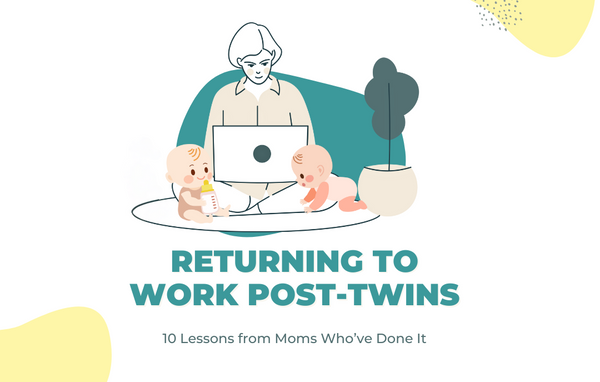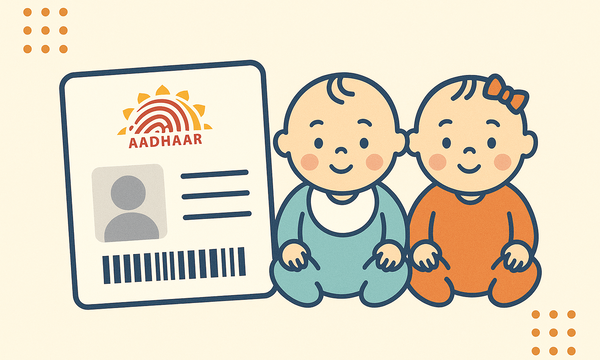
Growing up, for most of us, it was quite rare to find twins around. Most of our impression about twins were formed by popular movies, and some of those myths continue.
In today’s age, it is quite common to see twin babies - especially in urban areas. Studies show that twin birth rates in India used to be around 7.5 per thousand births two decades back. There has been an exponential increase in these figures – some estimates even indicating a five-fold rise especially in urban high-income households.
So, what is leading to this dramatic increase in twin births? While naturally its occurrence may vary with ethnicity and genetics, however external factors have recently come to the forefront. Primarily two factors:
- Delayed Pregnancies: Studies show that chances of twin pregnancies rise substantially with maternal age. With increase in marriage age, more women joining the workforce, and couples wanting financial stability before starting family – the urban families are delaying child-bearing, and this trend is here to stay.
- Rise in usage of Assisted Reproductive Technologies: Assisted methods such as IVF, have more than 30% chances of twin/multiples pregnancy. With changing lifestyle, high stress levels, and delayed pregnancies, significant number of couples are seeking medical assistance to conceive, leading to further rise in twin births.
As we witness a rise in this phenomenon, many of us are left wondering – how much of my understanding about twins is correct. In this article let us go through some of the frequently asked questions (FAQs) about twins. We will be busting some myths too as we go along
In This Article
How are twins formed or conceived? Identical twins vs fraternal twins – what is the difference?
There are two main mechanisms behind conceiving twins:
- When two separate eggs are fertilised by two different sperms, two different embryos (hence two babies) are formed. These are called the dizygotic or fraternal or ‘non-identical’ twins because each one has their own unique DNA set, hence different genes and possibility of different sex.
Simple, right? Except that a woman seldom produces two ova (eggs) in a menstrual cycle. But this phenomenon occurs much more commonly in women seeking reproductive help, particularly, therapies to enhance ovulation. This can also be done artificially, via ARTs (assisted reproductive technologies) where more than one fertilised egg is implanted in the uterus to enhance conception probability. - A single fertilised egg (zygote), splits into two during its development, thus resulting in monozygotic or ‘identical’ twins as they share the same DNA. Their genetic material is identical and hence the sex has to be the same.
Despite the pop culture surrounding identical twins, its occurrence is rarer than the fraternal twins. Also, it is not influenced by outside factors and is more of a spontaneous occurrence.

When are twins detected in pregnancy?
Twins can be detected as early as 6-8 weeks into pregnancy. Most of the parents come to know of the twins pregnancy during their first ultra-sound examination which happens around 8-10 weeks into pregnancy.
Do twins develop at the same rate?
Each twin develops individually, but they generally follow similar growth patterns. However, it is important to note that there can be variations in their development and size throughout the pregnancy.
Are twins genetic / hereditary?
Yes, heredity can be an important factor in case of natural twins pregnancy. Fraternal twins tend to run in some families, usually in the maternal lineage
Do twins have same DNA?
Yes – in case of identical twins, since they are born from a single fertilised egg
No – in case of fraternal or non-identical twins, since they are born out of fertilisation of two different eggs by two different sperms, leading to two completely unique sets of DNAs
Do twins have same blood group?
Yes – in case of identical twins, since they have the same DNA
Maybe – in case of fraternal or non-identical twins. Their chances of having same blood group are same as any siblings born at different times.
Do twins have same fingerprints?
No – even identical twins have unique fingerprints, making it the one sure-shot way of telling them apart. While genetics determine the general patterns on fingertips, the ridges along these patterns are influenced by several factors during foetus development. These lead to unique ridges in each person’s fingerprints
Do twins have their own unique identities?
Yes, twins have their own unique identities and personalities. Although they may share genetic traits and some physical similarities, they are separate individuals with distinct likes, dislikes, and characteristics
Hope this article could help answer some of the questions on your mind and cleared some of the misconceptions regarding twins. Have more questions? Feel free to drop in the comments and we will try to address them


















